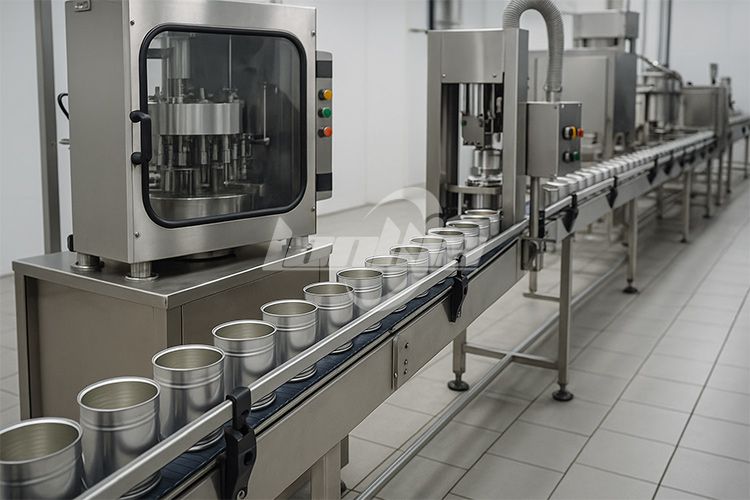As global demand for shelf-stable food continues to grow, investing in a reliable canning production line is critical for food manufacturers aiming to ensure product quality, safety, and efficiency. But with so many options on the market, how do you choose the right canning production line for your business? This article outlines the essential factors to consider and the types of equipment that make up a successful canning system.
Why the Right Canning Line Matters
A well-matched canning production line streamlines operations, reduces waste, and meets safety and regulatory standards. Whether you’re processing tuna, tomato paste, fruit cocktail, or ready-to-eat meals, your equipment needs to be tailored to your specific product, container type, and production scale.

Key Factors to Consider When Choosing a Canning Line
1. Product Type and Viscosity
Different food products—liquid, semi-solid, or solid—require different filling systems. A fruit cocktail line needs chunk-friendly fillers, while soups or sauces benefit from volumetric or piston fillers.
2. Container Format
Your line must support the type and size of container—tin cans, aluminum, glass jars, or retort pouches. Compatibility with container sealing and labeling is vital for downstream consistency.
3. Production Volume
Are you operating a small-scale craft facility or a large-scale factory? Automated high-speed lines (100–500 cans/minute) serve large businesses, while semi-automatic lines (20–60 cans/minute) are ideal for startups or niche products.
4. Sterilization Requirements
For products with long shelf lives, especially meats or sauces, a retort sterilizer is essential. Look for systems that integrate with your line for seamless transfer and cooling.
5. Automation Level
Fully automatic lines save labor and enhance consistency. They include auto-depalletizing, filling, seaming, retorting, labeling, and case packing. Semi-automatic options offer more manual control with lower capital investment.
Components of a Typical Canning Production Line
Washing Machine – Cleans empty cans or jars before filling
Filling Machine – Accurately doses product into containers
Seaming or Capping Machine – Seals containers airtight
Sterilization Equipment – Retort systems or steam tunnels
Labeling and Coding Unit – Applies batch numbers, barcodes, and labels
Conveyor System – Transports cans between machines
Inspection Systems – Checks for fill level, seal integrity, and labeling
Packing Station – Boxes or shrink-wraps for shipment
Choosing a Trusted Equipment Supplier
When investing in a canning line, work with experienced manufacturers like LONKIA Machinery, who can provide turnkey solutions, installation guidance, and after-sales service. Ask for customization options, technical support availability, and reference projects in your industry.
Final Thoughts
Choosing the right canning production line is not a one-size-fits-all process. From selecting the appropriate level of automation to ensuring equipment compatibility with your product and container types, thoughtful planning is essential. With the right setup, your food business can scale safely and efficiently while meeting market and regulatory demands.
